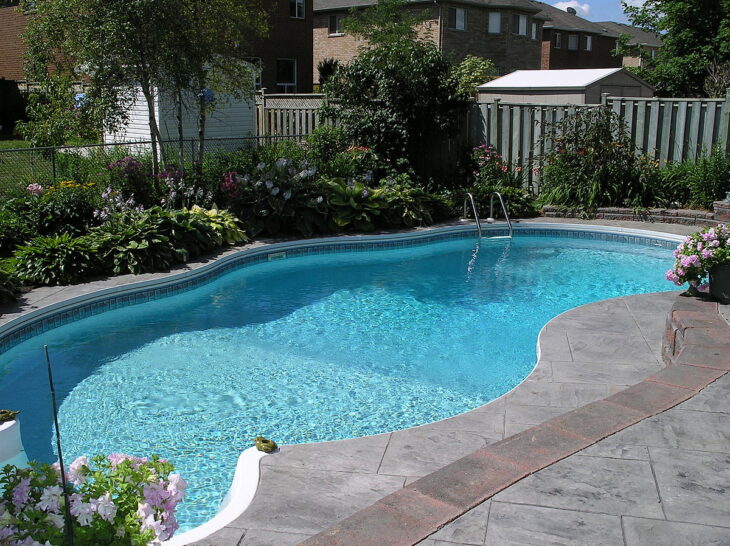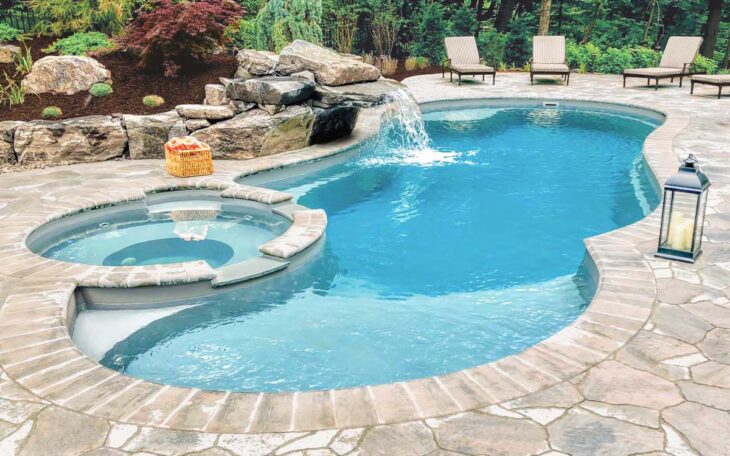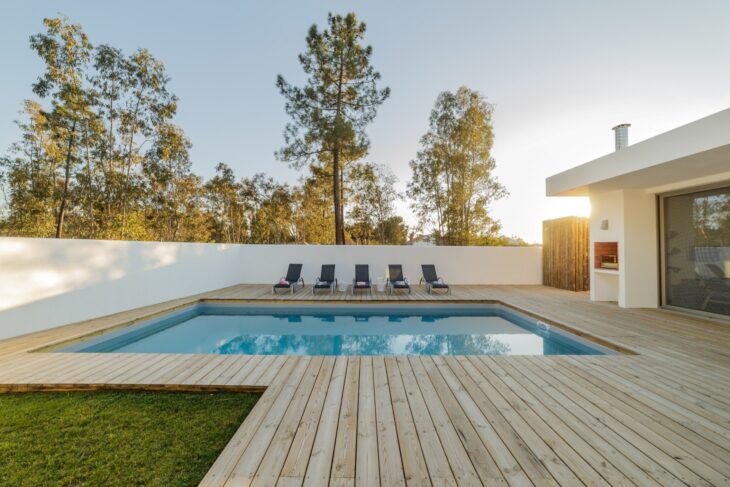No matter how well-made it is, your pool will eventually need to be resurfaced. Once the time comes, your primary concern will probably be the cost of it all. Is it worth the money? What should your budget even look like?
If these questions have been bothering you, we’re here with the answers! In this article, we’ll tell you everything you need to know about pool resurfacing, so you can be properly prepared to deal with it.
So, without any further ado, let’s get to the bottom of it!
Contents
Average costs of pool resurfacing

Source: wikipedia.com
For concrete pools, the costs of resurfacing depend on a variety of different factors. Many things need to be considered before you’re able to get a close estimate. Nonetheless, we can still calculate an average price range, just to give you something to hold on to while you’re planning your budget. Keep in mind that pool resurfacing can be quite costly, so you might need to plan ahead if you’re on a tight budget at the moment.
Usually, resurfacing the concrete pool costs around 10 000$. As we previously mentioned, this is just a rough estimate, as many other factors can drastically impact the final pricing.
So, how does the price vary depending on different factors?
Factor number one: Your location

Source: leisurepoolscanada.ca
If you’re in a remote area and you’re the only pool owner in the neighborhood, then you’ll probably have to look for pool services outside your town. The servicers will have to travel and transport the materials from far away, which could increase the overall costs of the operation.
In most cases, states positioned up in the Northern parts of the country will have higher service and material prices than the Southern ones. This is due to the lack of demand in these parts of the country. Of course, some places have higher standards of living than the others do, so goods and services come at completely different prices.
Make sure to do your research and look up the average prices of pool resurfacing near you. Don’t rely on averages in the entire country, as it could be far from the actual situation in your area.
Factor number two: The condition of your pool

Source: mmgtx.com
How damaged is your pool? Are there any hollow plaster areas in the pool? If so, it might need some extra work to be resurfaced. As you may predict, this will also affect the price of resurfacing.
So, make sure to properly assess the condition of your pool before you start the resurfacing process. Of course, if you can prepare the pool for resurfacing by fixing small imperfections, you might be able to save some money. Still, if you’re not quite experienced with these things, it’s always better to leave them in the hands of the professionals. Trying to refine and fix your pool by yourself can damage it even further if you’re not experienced enough. So, call a pool resurfacing professional such as the Texas-based poolresurfacingscottsdale.com, for example, and get your pool looking like it’s brand new.
Factor number three: The type of finish

Source: floridasfinestpools.com
When it comes to concrete pools, you’ll probably be dealing with specific types of finishes:
- Paint is the cheapest type of finish available. It’s not very durable, but it can look extremely well if you choose the right type of paint. A great thing about paint finishes is that you’re able to customize them to no end. You can choose any color and style you want, and you’ll be able to save some money at the same time. For a medium-sized pool, the costs of applying the paint are around 2000$. You can DIY it if your pool isn’t severely damaged, but otherwise, make sure to call the professionals.
- Plaster is a bit more expensive than paint, but it also offers better protection for your pool. You can repair some small plaster issues by yourself, but you’re always better off if you leave it to the professionals. A medium-sized pool can be refinished with plaster for about $8000 and up.
- Aggregate finishes are perhaps one of the best-looking pool finishes available. You can put pebbles or even quartz to serve as the pool bedding, which looks stunning if done properly. The price of refinishing will mostly depend on the brand of the aggregates, but expect it to be somewhere around $8000-$15000. Of course, this is just an estimate; you can find cheaper ones if you search long enough.
- Tiles are probably the most expensive finish on the market. They look amazing and are easy to maintain. The price will depend on the type of tile you’re planning to use as well as the size of the surface you’re planning on covering. Tiling the pool can cost you around $30 000 and upwards, but as expensive as it is, it certainly pays off in the long haul.
Factor number four: Waterline tiles

Source: concretedesignsfl.com
Waterline tiles are used to prevent staining on your pool. Since tiles come in various types, they also come at different prices. So, yes, the costs of resurfacing your pool will also depend on your choice of waterline tiles.
The most popular types are ceramic, glass, and stone. Some are cheaper than the others, so your choice will depend on your specific budget and preferences.
Factor number five: The size of your pool

Source: layorcare.com
The larger the pool, the higher the price. This is the most obvious one on this list, and perhaps also the most logical one. For every additional square foot that needs to be resurfaced, your costs will go up.
You’ll need to put more material and more effort into resurfacing a larger pool, so it’s no wonder you’ll need to pay more to get it done.
The bottom line
If your pool seems to be getting old and you start noticing some ugly cracks, it’s time to put a new coat of protection on it. As you probably know already, this process could be quite costly. The price will depend on a set of factors: the size of the pool, the materials used, your location, and the condition of your pool. Whatever you do, you should always reach out to the professionals in the industry, so you get the best possible results.
